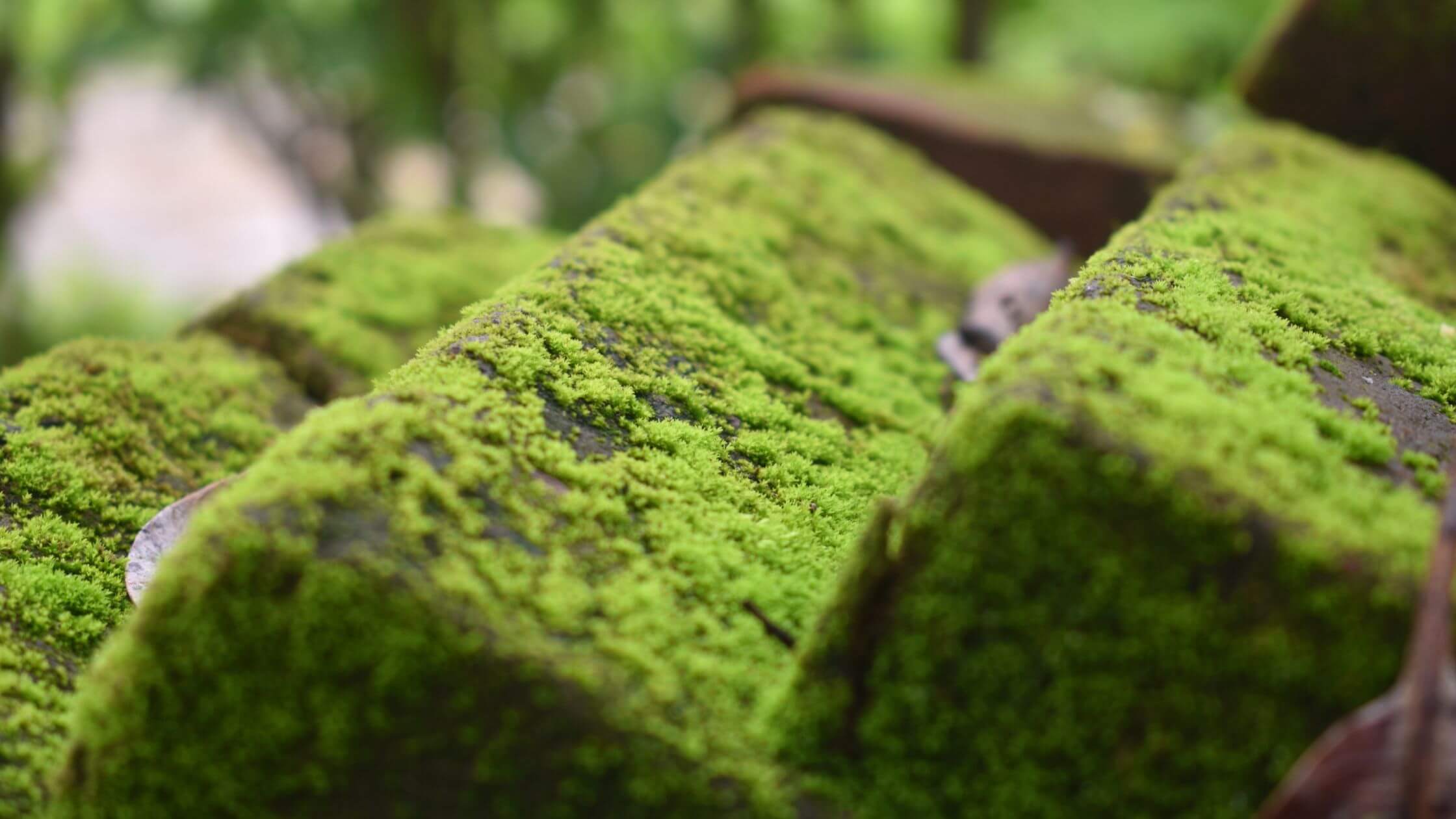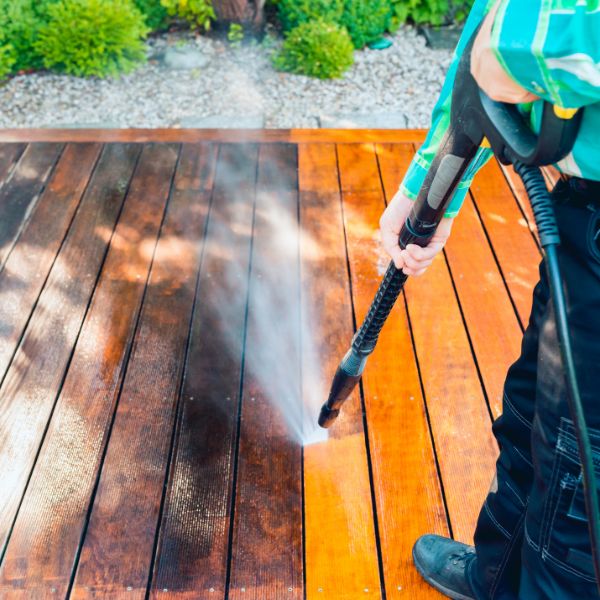Algae: More Than Just a Green Stain
Algae may seem like a harmless bit of green slime, but it poses real risks to both your surfaces and your safety. On outdoor areas like paths, decks, and driveways, algae spreads quickly in damp, shaded environments—and it thrives in humid climates like the Central Coast.
Once it takes hold, algae creates slippery conditions underfoot and begins to break down the surface underneath. It can stain porous materials, trap moisture, and encourage the growth of more harmful contaminants like mould and mildew.
Because algae spreads as a thin, film-like layer, many homeowners underestimate how difficult it can be to remove properly. Without the right treatment, it returns just as fast—especially during wet seasons.
What Is Algae?
Algae are simple, fast-growing organisms that thrive in moist, shaded, and nutrient-rich environments. Unlike mould or lichen, algae don’t need much to survive—just water, warmth, and a bit of organic material like dirt or pollen. These conditions are common on outdoor surfaces across the Central Coast, especially after rain or during periods of high humidity.
Algae usually appear as green, black, or dark brown patches. They form a thin, slippery film over concrete, pavers, timber, and even painted surfaces. While they may start small, algae spread rapidly across damp areas, particularly on surfaces that aren’t exposed to much sunlight or that retain moisture for long periods.
Though it may not always look aggressive, algae can embed into porous materials and set the stage for further contamination and damage.


How Algae Builds Up
Algae growth is often triggered by a combination of moisture, organic debris, and lack of sunlight—conditions that are all too common on outdoor surfaces throughout the Central Coast. After rainfall or during periods of high humidity, water can sit on hard surfaces for hours or even days. If that moisture isn’t able to drain or dry properly, algae spores quickly begin to spread.
Key contributors to algae buildup include:
- Poor drainage or pooling water
- Shaded areas with minimal sun exposure
- Organic matter like soil, dust, or leaf litter
- High humidity or frequent rainfall
Once established, algae can multiply rapidly—especially on rough or porous materials like concrete, timber, or pavers. It clings tightly to the surface, making it hard to remove without specialised treatment.
Even areas that look clean can begin growing algae again if the conditions are right. That’s why ongoing maintenance and proper cleaning methods are essential for keeping it under control.
Surface Damage from Algae
Algae may seem like a surface-level issue, but the damage it causes can be both hazardous and costly over time. It affects not just how your property looks, but how safe and durable your outdoor areas remain.
Here’s what algae can do if left untreated:
- Creates slip hazards:
Algae forms a slick, slimy layer on surfaces like paths, stairs, and decks. When wet, it becomes extremely slippery, increasing the risk of falls—especially for kids, the elderly, and anyone walking in bare feet.
- Stains and discolours surfaces:
The dark green or black residue algae leaves behind can stain concrete, timber, and tiles. These stains often seep into the surface and can be very difficult to remove with basic cleaning.
- Traps moisture:
Algae holds moisture against the surface, which accelerates wear and tear—particularly on timber, paint, and porous stone. This can lead to cracking, swelling, or premature decay.
- Encourages further growth:
Algae acts as a base layer for other contaminants, such as mould and lichen, making it even harder to keep surfaces clean long-term.
Prompt, professional removal not only restores the appearance of your outdoor areas—it helps prevent further damage and safety issues down the track.
Typical Areas Affected with Algae
Algae can take hold on almost any outdoor surface that stays damp or shaded, especially where airflow is limited. On Central Coast properties, it’s most often found in areas exposed to the elements but not enough direct sunlight to keep them dry.
Common hotspots for algae growth include:
- Driveways and footpaths:
These surfaces often collect water runoff and organic matter, creating ideal conditions for algae to spread—particularly along edges and in low spots.
- Decking and stairs:
Timber absorbs moisture easily, and shaded areas on decks or outdoor steps become prime targets for algae buildup, leading to both stains and slip hazards.
- Pool surrounds and tiled patios:
Constant exposure to water and foot traffic makes these areas especially vulnerable. Algae here can become dangerously slippery and difficult to clean with household tools.
- Walls and retaining structures:
Vertical surfaces that catch overspray from irrigation or lack sunlight can also develop algae, often alongside mould or mildew.
- Outdoor furniture and hardscaping:
Algae doesn’t just grow on large structures—it can affect pavers, stone features, and furniture bases as well.
These areas may seem manageable at first, but algae spreads quickly when conditions are right. Without the right treatment, it tends to return just as fast as it disappears.
Glason’s Algae Removal Process
At Glason High Pressure Cleaning, we don’t just wash algae away—we treat it properly to stop it coming back. Algae might seem like a surface issue, but removing it safely and effectively takes more than just water pressure.
Here’s how we do it:
Every job starts with a proper inspection. We consider the surface type, level of buildup, and surrounding environment to determine the safest and most effective method of removal.
We service homes and businesses across the Central Coast, and we tailor every job to protect your surfaces while delivering results that last.
Don’t Let Algae Damage Your Property – Book Expert Removal Today
Algae might start as a light stain, but if left untreated, it becomes a safety hazard and a source of long-term surface damage. It’s not just about appearances—it’s about protecting your home, your family, and your investment.
Glason High Pressure Cleaning offers professional algae removal across the Central Coast using biocide treatment and surface-safe cleaning methods tailored to each area of your property. Whether it’s your driveway, deck, pool surround, or patio, we’ll clean it thoroughly and help prevent it from coming back.
Ready to restore your outdoor areas?


